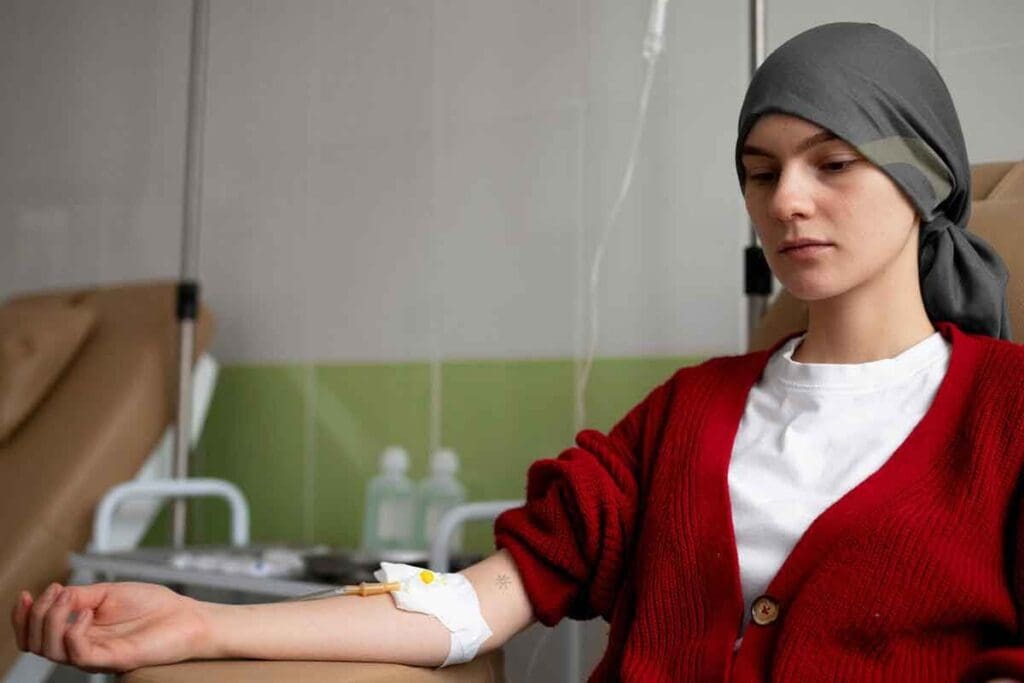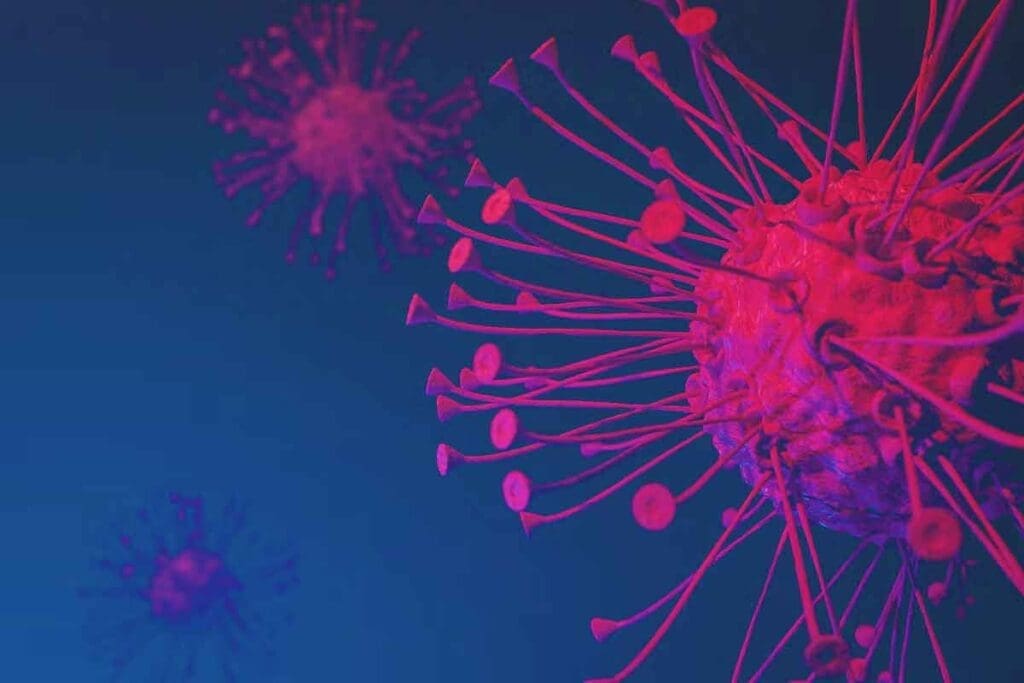Last Updated on November 20, 2025 by Ugurkan Demir

Managing cancer well depends on chemotherapy regimens that fit you. At Liv Hospital, we know picking the right treatment options can feel tough. But knowing your chemo regimen helps you make better choices.Discover essential chemotherapy treatment regimens, schedules, and common drug combinations.
Our team offers care that’s trusted and focused on you. A chemotherapeutic regimen is a detailed plan. It mixes certain drugs, doses, and schedules for each cancer type.

It’s key to know the science behind chemotherapy to treat cancer well. Chemotherapy plans are made based on the cancer type, its stage, and the patient’s health.
A chemotherapy regimen is a structured treatment plan. It lists the drugs, dosages, and when to take them. The goal is to treat cancer effectively while reducing side effects.
These plans aim to kill fast-growing cancer cells. The choice of drugs and treatment schedule depends on the cancer type, stage, and the patient’s health and history.
Creating chemotherapy protocols takes a lot of research and clinical trials. This ensures treatments are consistent across different doctors.
| Regimen Type | Drug Combination | Cancer Type |
| CHOP | Cyclophosphamide, Doxorubicin, Vincristine, Prednisone | Lymphoma |
| GC | Gemcitabine, Cisplatin | Bladder, Pancreatic |
| ICE | Ifosfamide, Carboplatin, Etoposide | Relapsed Lymphoma |
Combination chemotherapy uses many drugs to fight cancer better. Knowing the scientific basis helps doctors make treatments fit each patient’s needs.

It’s important for patients to know about chemotherapy cycles and treatment plans. We’ll explain how these plans are made and changed for each patient.
Chemotherapy is given in cycles. Each cycle has treatment days and rest periods. Treatment days are when the drugs are given to fight cancer. Rest periods help the body recover and grow healthy cells.
The time for treatment and rest can change a lot. It depends on the cancer type, the treatment plan, and the patient’s health. For example, some cycles might last 2-4 weeks, with treatment on some days and rest on others.
Many things are thought about when making treatment plans. These include how long treatment will last and how often cycles will happen. Treatment can last from a few months to years, based on the cancer and treatment goals.
How often cycles are given can also change. It might be weekly or every few weeks. The aim is to get the best results while keeping side effects low.
Chemotherapy plans can be flexible. They are made just for each patient, based on how they react to treatment. We watch patients closely and change plans as needed.
Changes might include adjusting drug doses, changing how often treatment is given, or switching treatments. These changes help make treatment better and manage side effects.
Knowing about chemotherapy cycles and plans helps patients on their treatment journey. Our goal is to give care that fits each patient’s needs, making treatment as effective as possible.
It’s important to know about the different types of chemotherapy drugs. They are used together in treatment plans. Each drug targets cancer cells in its own way. Let’s look at the main types of chemotherapy drugs used in treatments.
Alkylating agents attach an alkyl group to cancer cells’ DNA. This stops them from making copies of themselves and kills them. Cyclophosphamide and Chlorambucil are examples. They help treat lymphomas and leukemias.
Antimetabolites look like normal body chemicals but mess with DNA making. Methotrexate and 5-Fluorouracil (5-FU) are used for breast, colorectal, and leukemia cancers.
Anthracyclines get in between DNA strands, stopping DNA and RNA making. Doxorubicin and Epirubicin are common ones. They work on many cancers like breast, lymphomas, and leukemias.
Topoisomerase inhibitors block enzymes needed for DNA making. Etoposide and Topotecan are used in treatments. They’re good for lung, ovarian, and some leukemia cancers.
Other key drugs include platinum-based agents like Cisplatin, taxanes like Paclitaxel, and vinca alkaloids like Vincristine. Each class is important in fighting cancer. They’re often used together to work better and fight resistance.
Choosing chemotherapy drugs depends on many things. These include the cancer type and stage, the patient’s health, and past treatments. Knowing about these drugs helps doctors make treatment plans that fit each patient’s needs.
Using multiple chemotherapy drugs together has changed how we treat cancer. This method targets cancer cells better, lowers the chance of resistance, and improves results for patients.
Using more than one drug in treatment has many benefits. Enhanced efficacy is a key advantage. Different drugs can hit cancer cells at different times in their growth.
Combination chemotherapy helps us make a more detailed treatment plan. For example, mixing drugs with different ways of working can make the treatment more effective.
When we mix different chemotherapy drugs, they can work together better. This means their combined effect is stronger than each drug alone.
| Drug Combination | Mechanism of Action | Synergistic Effect |
| Alkylating agents + Anthracyclines | DNA damage + Intercalation | Enhanced apoptosis in cancer cells |
| Antimetabolites + Topoisomerase inhibitors | Inhibition of DNA synthesis + DNA strand breakage | Increased cancer cell death |
Understanding these synergistic effects helps us create better combination chemotherapy plans.
Combination chemotherapy has many benefits but also challenges in managing side effects. Using more drugs can raise the risk of bad reactions, so it’s important to watch patients closely.
To lessen these risks, we use several strategies:
By balancing the benefits and risks of combination chemotherapy, we can offer effective treatments for many cancers.
Chemotherapy is filled with abbreviations for different treatments. Each is made to fight specific cancers. These plans mix drugs in complex ways. Knowing them is key for patients and doctors.
The CHOP regimen is a top choice for lymphoma treatment. It includes Cyclophosphamide, Hydroxydaunorubicin (doxorubicin), Oncovin (vincristine), and Prednisone. It’s a mainstay for many non-Hodgkin lymphoma types.
Key components: Cyclophosphamide, Doxorubicin, Vincristine, Prednisone.
GC chemotherapy uses Gemcitabine and Cisplatin. It’s often for bladder cancer and other cancers. The GC mix is known for its good results and fewer side effects.
Key components: Gemcitabine, Cisplatin.
“The combination of Gemcitabine and Cisplatin has shown significant efficacy in treating various cancers, including bladder cancer.” – Oncology Research
The ICE regimen targets relapsed or refractory lymphomas. It’s made of Ifosfamide, Carboplatin, and Etoposide. It’s used when first treatments don’t work.
Key components: Ifosfamide, Carboplatin, Etoposide.
The MAP regimen fights osteosarcoma, a bone cancer. It’s a mix of Methotrexate, Adriamycin (doxorubicin), and Cisplatin. It helps increase survival chances for osteosarcoma patients.
Key components: Methotrexate, Doxorubicin, Cisplatin.
Knowing these chemotherapy regimens and their abbreviations helps patients. It lets them understand their treatment options better. It also helps them talk more clearly with their healthcare team.
Choosing the right chemotherapy regimen is a detailed process. Healthcare providers look at many factors to find the best treatment for each patient. This ensures the best results possible.
The type and stage of cancer are key in picking the right treatment regimen. Different cancers need different chemotherapy drugs. For example, some regimens work better for breast cancer, while others are better for lung or colon cancer.
| Cancer Type | Common Chemotherapy Regimens |
| Breast Cancer | AC-T, FEC-T |
| Lung Cancer | Platinum-based doublet |
| Colon Cancer | FOLFOX, FOLFIRI |
Each patient’s health, age, and any other health issues are important. For example, some heart conditions might mean avoiding certain chemotherapy drugs.
A patient’s past treatments are also key. Those who have had chemotherapy before might need a different chemotherapy regimen. This is because their body might have built up resistance or toxicity.
Genetic and biomarker tests give important clues. For example, HER2-positive breast cancer patients might get better results with targeted therapies along with chemotherapy.
Healthcare providers use all these factors to create a personalized chemotherapy regimen. This approach aims to improve treatment results while reducing side effects.
Lung cancer treatment includes complex chemotherapy plans. These plans are made for each type of lung cancer. Lung cancer is mainly divided into non-small cell lung cancer (NSCLC) and small cell lung cancer (SCLC). Each type needs a different treatment.
For NSCLC, treatments often mix different drugs. Some common treatments include:
Doctors choose these treatments based on the cancer’s stage, the patient’s health, and genetic markers.
SCLC gets more aggressive treatments because it grows fast. Common treatments are:
The right treatment depends on how far the cancer has spread and how well the patient responds to the first treatment.
Chemotherapy is often paired with radiation and surgery to work better.
Chemoradiation: For advanced NSCLC, mixing chemotherapy with radiation can help more. Giving chemotherapy and radiation at the same time is common.
Neoadjuvant and Adjuvant Chemotherapy: Chemotherapy can be given before (neoadjuvant) or after (adjuvant) surgery. It helps shrink tumors or kill any cancer cells left behind.
These combined treatments need careful planning from the healthcare team. This helps get the best results and reduce side effects.
In summary, lung cancer treatments vary a lot. They depend on the cancer type, stage, and the patient’s situation. Knowing these treatments is key to effective care.
Effective chemotherapy treatment plans need constant watching and tweaks for the best results. Every patient reacts differently to treatment, so it’s key to keep a close eye on how they’re doing. Adjustments to the treatment plan are often needed.
“The key to successful chemotherapy lies in its ability to be tailored to the individual patient’s needs,” as emphasized by leading oncologists. This personalized approach helps make treatment more effective and less harsh.
We use many ways to check how well patients are doing during treatment. These include regular blood tests, CT scans, and physical exams. These tools help us see if the treatment is working and if changes are needed.
Chemotherapy plans often need to be changed for several reasons. These include severe side effects, not responding well to treatment, and health changes. Knowing these reasons helps us make smart changes to the treatment plan.
Severe side effects are a big reason for changing treatment plans. If a patient has severe side effects, we might adjust the dose or switch medications to improve their life quality.
Changing the dose or schedule of chemotherapy is very important. These changes help make treatment more effective and reduce side effects. For example, if a patient has severe low white blood cell count, we might delay or reduce the next treatment cycle.
As a renowned oncologist said, “Adjusting the chemotherapy regimen based on patient response and tolerance is essential for achieving the best possible outcomes.” This flexible approach ensures patients get the most effective treatment for their needs.
Cancer treatment is changing fast, thanks to new trends in chemotherapy. We’re moving towards treatments that are more tailored and effective for each patient.
Precision medicine is changing how we treat cancer. It means treatments are made just for each patient, based on their unique needs and the cancer’s type. This uses genetic and biomarker tests to find the right drugs or drug combinations.
For example, BRCA1 and BRCA2 gene mutations in breast and ovarian cancers help pick the right chemotherapy. Also, HER2-positive breast cancers might do better with targeted therapies along with chemotherapy.
| Genetic Marker | Cancer Type | Potential Treatment |
| BRCA1/2 | Breast, Ovarian | PARP inhibitors with chemotherapy |
| HER2 | Breast | Trastuzumab with chemotherapy |
| EGFR mutations | NSCLC | EGFR inhibitors |
Another trend is using new drug combinations. Scientists are looking for ways to make treatments work better together. This can make treatments more effective and less likely to cause resistance.
Combining chemotherapy with immunotherapy is a big step forward in cancer treatment. This mix can help the body’s immune system fight cancer better. It’s a way to overcome some of chemotherapy’s limits.
For instance, checkpoint inhibitors can be used with chemotherapy to improve the immune response against tumors. This method is showing promise in lung, bladder, and head and neck cancers.
As we keep exploring these trends, it’s clear that the future of chemotherapy is all about making treatments more personalized, effective, and easier to handle for patients.
Chemotherapy treatment plans are key in cancer care. They offer many options based on each patient’s needs. We’ve looked at the science behind these plans, common drug mixes, and what affects the choice of treatment.
Choosing the right chemotherapy involves many factors. These include the type of cancer, the patient’s health, and what the treatment aims to achieve. Understanding these complexities helps doctors create treatment plans that work best for each patient.
Creating chemotherapy plans is a detailed task. It’s about finding the right balance between how well it works and how well the patient can handle it. As we keep improving in oncology, using precision medicine and new drug combinations will make chemotherapy even better.
In the end, making good chemotherapy choices needs a thorough and caring approach. By teaming up, doctors and patients can make smart decisions about treatment plans. This leads to better results and a better life for those fighting cancer.
Chemotherapy treatment regimens are detailed plans for cancer treatment. They outline the type, dose, and schedule of drugs. These plans are tailored to each patient’s cancer and needs. They aim to be effective while minimizing side effects.
Chemotherapy regimens come from clinical trials and research. They are made consistent to ensure the best treatment approach. This includes considering the cancer type, stage, and patient’s health.
Chemotherapy drugs are grouped into classes like alkylating agents and antimetabolites. Each class targets cancer cells in different ways. They can damage DNA or stop cell division.
Treatment plans are based on the cancer type and patient’s health. Days of treatment and rest are carefully planned. This helps with recovery and reduces side effects.
Combination chemotherapy uses several drugs together. It boosts effectiveness, lowers drug resistance risk, and may improve outcomes.
Common regimens include CHOP for lymphomas and GC chemo for bladder cancer. Each is designed for specific cancers and tailored to patients.
Regimens are chosen based on cancer type, stage, and patient health. Personalized plans ensure the best treatment for each patient.
Trends include precision medicine and new drug combinations. These aim to improve results, reduce side effects, and enhance care.
Regimens are checked through regular tests and imaging. Adjustments are made based on patient response and side effects to improve outcomes.
Genetic and biomarker testing help identify cancer characteristics. They guide targeted therapies and predict treatment response.
Lung cancer regimens depend on the type and stage. Treatment plans may include radiation and surgery, tailored to each patient.
Subscribe to our e-newsletter to stay informed about the latest innovations in the world of health and exclusive offers!